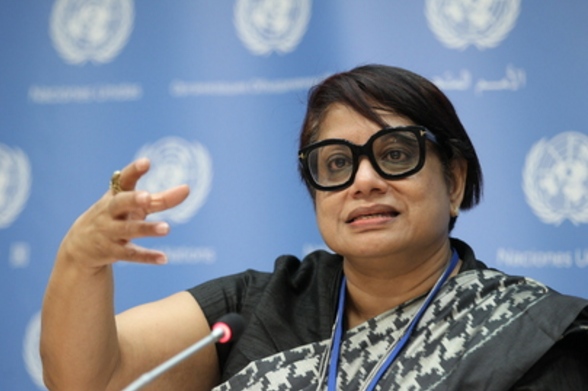Why Does Women, Peace and Security Financing Matter?
radhika

Fifteen years after UNSCR 1325 and the establishment of the Women, Peace and Security Agenda, we have a strong normative framework but ineffective implementation for accountability.
One of the main roadblocks to implementation is a lack of sufficient funding for gender equality and peace. Only about 10percent of UNSCR 1325 National Action Plans include dedicated budgets; only two percent of aid to peace and security for fragile states in 2012-2013 targeted gender equality; and Member States only limitedly and inconsistently have begun to integrate women’s human rights and gender equality into national budgets. Meanwhile, in 2015, there was a global military spend of $1.6 trillion, over $4 trillion allocated to bail out banks, and over $6 trillion sequestered in corporate tax havens. As this demonstrates, the problem is not a lack of funding, but a failure to effectively use existing funding to promotes human security based on women’s lives and experiences.
The fact that women’s rights are human rights should be enough to implement the Women, Peace and Security Agenda. However, there are more reasons for accountability as well. Studies have shown that women’s participation increases the probability of a peace agreement lasting at least two years by 20 percent, and the probability of a peace agreement lasting 15 years by 35 percent (Global Study, 2015). How well women are treated within a society is the number one predictor of a state’s peacefulness in the international community (Hudson et al., 2014). In addition, feminist movement building has also been demonstrated to be the strongest predictor of policies on reducing violence against women (Weldon and Htun (2013). The reason to #MoveTheMoney is clear: If the international community wants peace and security, it cannot keep under-funding and under-valuing gender equality.
The resources available below expand on three key messages building on the Global Study on 1325: The links between militarism and violence, the links between gender equality and peace, and the links between feminist movement-building and violence against women. We encourage you to use these materials to strengthen your advocacy and arguments to #MoveTheMoney.
